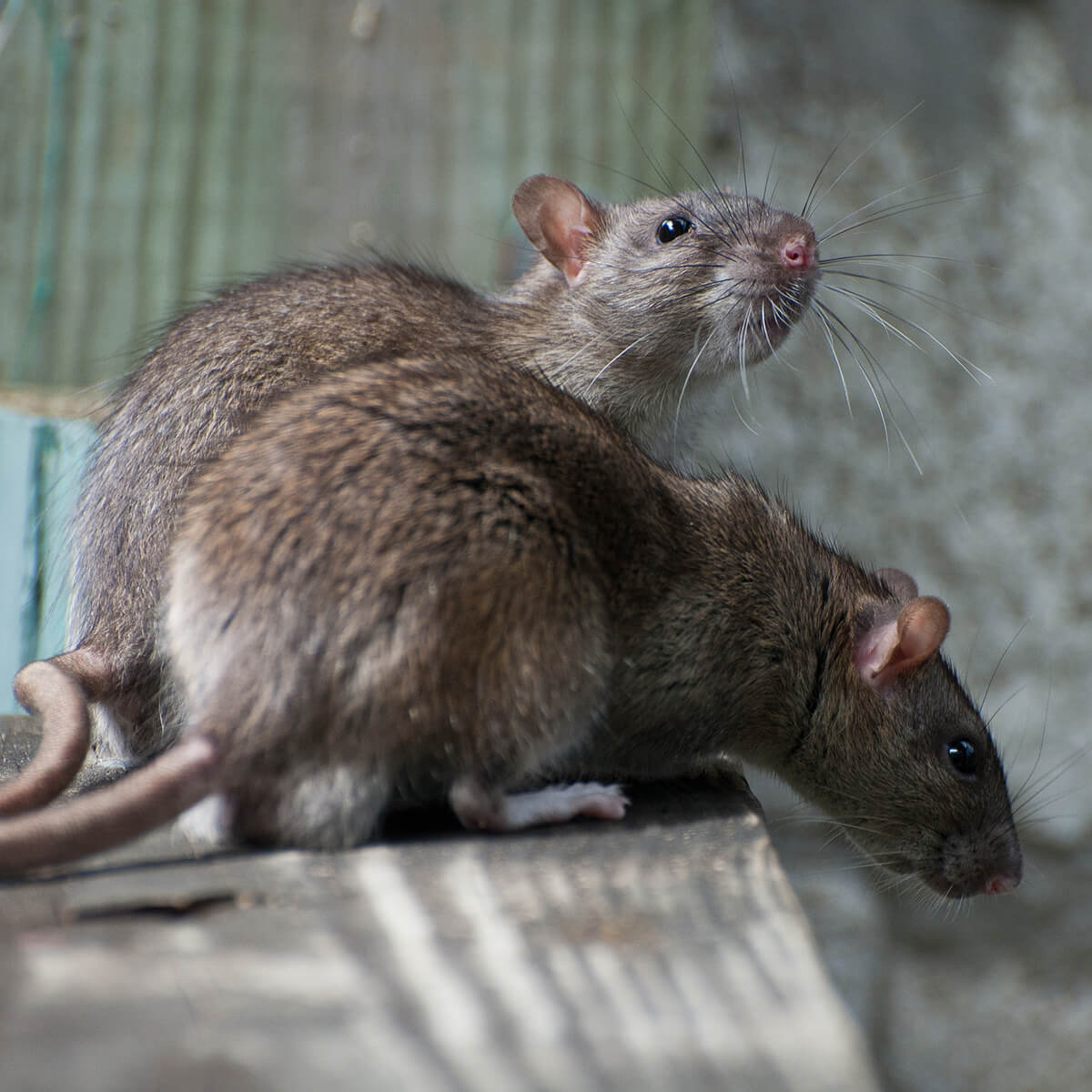Brown Rat
The brown rat is well-adjusted to life in urban areas, so the chances of coming across this rodent are big. Also popular as a common rat or Norwegian rat, this species is easily distinguishable and well-known in Australia. Unlike the black rat, the brown one has a shorter tail and larger body in comparison. For more useful details about this Australian pest, you can check below.
Brown rat characteristics

- Scientific name: Rattus norvegicus
- Colour: Dark or light brown, but could be also grey mixed with white on the stomach
- Body: Round head with distinctly long whiskers and shorter tail
- Weight: From 200 to 500 g
- Size: Big species that could reach 40 cm
- Danger: Brown rat’s urine can spread diseases like Hantavirus, Rat-bite fever and others, threatening a person’s health
- Region: Mainly Southern Australia in the coastal areas
Brown rat life-cycle
- Given the right environment, the brown rat can reproduce all year round with 3 to 5 five litters for the period.
- One litter usually consists of 7 little brown rats. The gestation period for the young ones lasts approximately 3 weeks. They can become sexually active after 5 - 10 weeks.
- A brown rat normally lives up to three years, however, different factors often play a role in shortening this period.
Read also about: House Mouse
Brown rat habits
- It is possible to spot a brown rat in your garden since bushes are one of the preferred nesting places for these rodents. Others include sewage systems and home foundations, with the houses being especially attractive for the species.
- A brown rat nests in the ground by digging a deep tunnel. This is done by the females, as the nest serves as a shelter for raising the young and as food storage.
- The diet of the brown rat does not consist of one particular thing. These species can eat anything, but there is one food that they favour most, which is cereal.
Brown rat facts
- Despite being called Norway rat, this species does not come from there. China is, in fact, considered to be their native country. The name was popularised due to the belief that the brown rat came to England with the help of the Norwegian ships.
- Rats prefer to live together in groups with strict order in it, which provides protection and makes looking after the little ones easier.
- These species are most active during the night, so it may be hard to notice right away that you have a pest in your home. If you see droppings or anything else that may serve as proof of rat infestation, do not hesitate to contact an expert for adequate treatment.